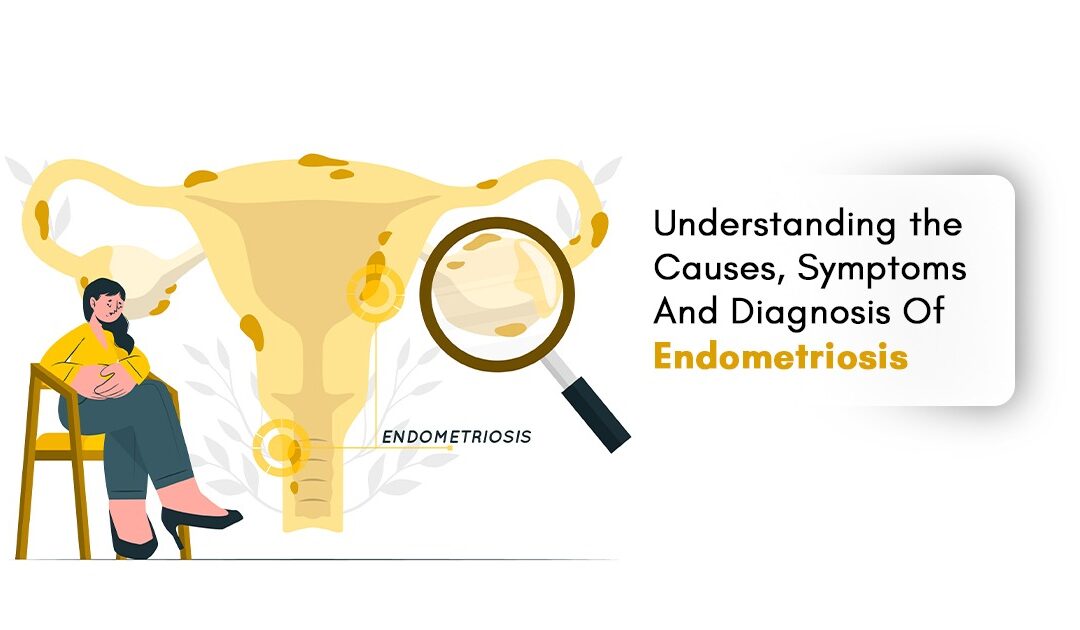A condition where the tissue identical to your uterus’ lining develops on other regions of your body. As a consequence of that, you may experience painful symptoms hindering not only your menstrual cycle but also your day to day activities. Some people suffering from endometriosis also complain about not being able to get pregnant because of factors such as scarring and blocking of the fallopian tubes as well. While the growth of the tissue might affect ovaries, fallopian tubes and tissue lining, it may rarely affect the region of the location of pelvic organs.
When endometriosis tissue adapts as a lining inside the uterus, it thickens, disintegrates and bleeds with each menstrual cycle in the process. The difficult part about endometriosis is that the tissue grows in regions it does not belong in and does not leave the body naturally.
What Are The Places I Can Develop Endometriosis In?
The specific areas where you are more prone to developing endometriosis is:
- Area behind your uterus
- A layer of the wall of your uterus (Myometrium)
- Ovaries
- Peritoneum
- Fallopian tubes
The areas that you are less prone to developing endometriosis is:
- Rectum
- Bladder
- Intestines
- Diaphragm
- Vagina
- Lung
Endometriosis affects an estimated 42 million women in India, often leading to pain, infertility, and other health issues, and is frequently underdiagnosed. Several healthcare professionals diagnose endometriosis in people in the age group of 20s and 30s. The symptoms however are treatable and manageable with the right personalized plan.
What Are The Symptoms of Endometriosis?
There are several symptoms of endometriosis. However, the most common one is pain in the pelvis. This pain can either be severe or mild. In most scenarios, the symptoms of endometriosis get worse just prior and during your period because of the swelling that is brought about by the hormonal imbalance occurring at the time.
The symptoms of endometriosis consist of:
- Painful periods (dysmenorrhea)
- Pain during intercourse (dyspareunia)
- Pain during bowel movements or urination
- Excessive bleeding during periods
- Infertility
- Fatigue
- Bloating
- Diarrhea or constipation
Most times, people with endometriosis do not realize that they’re suffering from it until they face difficulty in getting pregnant. It is important to note that there is no link between the symptoms and the severity of your condition. Some people with extremely few patches of endometriosis may experience severe pain. On the other hand, some people with plenty of patches of endometriosis may experience little to no pain.
Is Endometriosis Making me Fat?
No, endometriosis does not make you fat but gives you the illusion because of the bloating and fluid retention.
What are the Causes of Endometriosis?
The precise origin of endometriosis remains unclear, yet multiple theories exist. The most commonly accepted theory is retrograde menstruation, in which menstrual blood travels backward through the fallopian tubes and enters the pelvic cavity. This blood has endometrial cells that can adhere to the pelvic organs and proliferate.
Here are several alternate reasons that could be the cause of endometriosis:
- Genetic Influences: The likelihood of developing endometriosis increases if a family member is affected.
- Dysfunction of the Immune System: The immune system might struggle to identify and eliminate endometrial cells that have developed outside the uterus.
- Environmental Factors: Research indicates that contact with specific chemicals, like dioxins, might elevate the risk of endometriosis.
However, it is essential to emphasize that these are merely theories, and additional studies are necessary to validate the precise causes of endometriosis.
How is Endometriosis Diagnosed?
Endometriosis is usually diagnosed based on your symptoms and tests such as pelvic exam and ultrasound if necessary. If you experience painful and heavy periods, speak to your gynecologist today.

